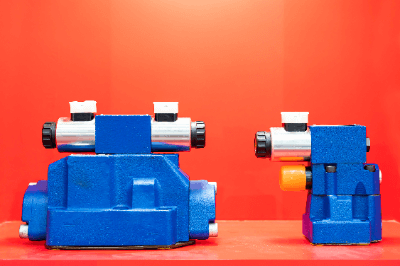What Is a Hydraulic Solenoid Valve?

A hydraulic solenoid valve is an electromechanically operated valve that controls the flow and pressure of oil in hydraulic systems. It uses electromagnetic force to open or close the valve, providing precise control over fluid dynamics in industrial and mechanical applications.
Uses of Hydraulic Solenoid Valves
These valves are integral to various industries, enabling efficient operations in:
- Manufacturing: For controlling hydraulic presses and clamping devices in metalworking machines.
- Construction Machinery: To operate hydraulic excavators, cranes, and lifting equipment.
- Agriculture: In tractors and harvesters for controlling lifting arms and adjustable headers.
- Automobiles: Within braking systems for brake pressure control and in power steering systems.
Principle of Hydraulic Solenoid Valves
The valve functions through two main components:
- Spool: A movable cylinder inside the valve that controls oil flow by opening and closing channels.
- Electromagnetic Coil: Generates a magnetic field to move the spool, thus controlling the flow path.
How to Select a Hydraulic Solenoid Valve
Consider the following factors for selection:
- Supply Voltage: Match the valve’s voltage requirement with the system’s power supply.
- Maximum Working Pressure: Ensure the valve can withstand the system’s maximum pressure to avoid damage.
- Connection Bore: Choose a size compatible with the system’s pipes and hoses to prevent leaks.
- Valve Type: Select between single and double solenoid valves based on the application’s needs for valve positioning and movement.